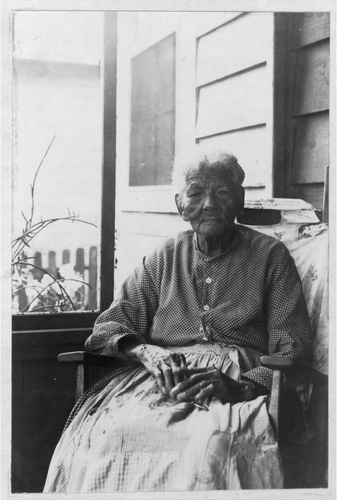SAXTONS RIVER — Those recent testimonials are from caged immigrant children ages 8, 11, and 15, victims of one of the worst humanitarian tragedies ever seen in this country. But there are others.
Slave narratives gathered in the 1930s by the Federal Writers' Project give compelling testimony to the reality of slavery in our national history.
John Fields, 89 years old in 1937 when he was interviewed, recalled that “the greater part of the plantation owners were very harsh if we were caught trying to learn or write.”
“We were never allowed to go to town and it wasn't till after I ran away that I knew they sold anything but slaves, tobacco and whiskey,” he said. “Our ignorance was the greatest hold the South had on us.”
Charity Anderson, who believed she was 101 when she was interviewed that same year, was a house slave but she saw slaves “almost tore up by dogs and whipped unmercifully.”
Mary Vaughn Reynolds, then 105 years old, was enslaved in Louisiana from around 1832 to 1865 and remembered seeing brutal beatings.
“Slavery was the worst days was ever seed in the world. They was things past tellin', but I got the scars on my old body to show to this day,” she told the writers.
“I seed worse than what happened to me. I seed them put the men and women in the stock with they hands screwed down through holes in the board and they feets tied together and they naked behinds to the world.
“Solomon the overseer beat them with a big whip and massa look on. The niggers better not stop in the fields when they hear them yellin'. They cut the flesh most to the bones and some they was when they taken them out of stock and put them on the beds, they never got up again.”
Another reality of slavery, let us recall, was that black children were cruelly separated from their parents.
* * *
And let's not forget what happened to Native Americans. At the beginning of the 1830s, nearly 125,000 of them lived on nearly 11 million acres of ancestral land in the U.S.
But by the end of the decade, the federal government had forced them to leave their western homelands and walk thousands of miles to a specially designated “Indian territory” across the Mississippi River.
In the winter of 1831, the Choctaw became the first nation to be expelled from its land. They made the journey on foot, some “bound in chains and marched double file,” by one account. Many people died along the way. A Choctaw leader called it a “trail of tears and death.”
In 1836, the federal government drove the Creeks from their land: 3,500 of the 15,000 Creeks who set out for Oklahoma did not survive. Historians estimate that more than 5,000 Cherokee didn't survive.
But it didn't stop there.
In 1879, a U.S. cavalry captain opened a government-backed institution that forcibly separated Native American children from their parents in order to “kill the Indian in him, and save the man.”
Over the next several decades, nearly 150 such boarding schools opened where staff forced indigenous students to cut their hair and use Anglo-American names. They forbid children from speaking their respective Native languages and observing their cultural practices. Once they returned home, if they ever did, children struggled to relate to their families.
* * *
Then there was the Manzanar War Relocation Center, one of 10 concentration camps opened as a result of the racial prejudice and fear of Japanese Americans.
In 1942, President Franklin D. Roosevelt signed an executive order authorizing the establishment of military areas and the removal from those areas of anyone who might threaten the war effort.
Without due process, the government gave everyone of Japanese ancestry living on the West Coast only days to decide what to do with their houses, farms, businesses, and other possessions.
They didn't know where they were going or for how long. Each family was assigned an identification number and loaded into cars, buses, trucks, and trains, taking only what they could carry.
Japanese Americans were transported under military guard to 17 temporary assembly centers before being moved to one of the hastily built relocation centers, surrounded by barbed wire and guard towers with searchlights.
Rosie Kakuuchi recalls that “one of the hardest things to endure was the communal latrines, with no partitions; and showers with no stalls.” She described the situation as “embarrassing, humiliating, and degrading.”
* * *
Many of the abuses that occurred in U.S. history have become sadly familiar. Today, we are experiencing yet another episode in our continuing national disgrace, one that bequeaths to us a contemporary “trail of tears.”
We weep for the innocent children and their families incarcerated and maltreated by an administration that lacks morality, ethics, and humanity.
And increasingly cognizant of sad events long past in our own country, we are also aware of, and frightened by, the memory of times not so far back when the world was in grave danger, threatened by a fascism that seemed likely to overtake the world.
Those memories are aligned with recent alarming events globally that seem to be racing toward reprise.
In a country where MAGA hats are the new KKK hoods, and “Trump” is the new swastika, as some have noted, such thoughts are not irrational. They are grounded in the swift replay of onerous events and political decisions that leave a wide berth for asking “Never again?”
One can but wonder what history books will record when the realities of our time are written.
